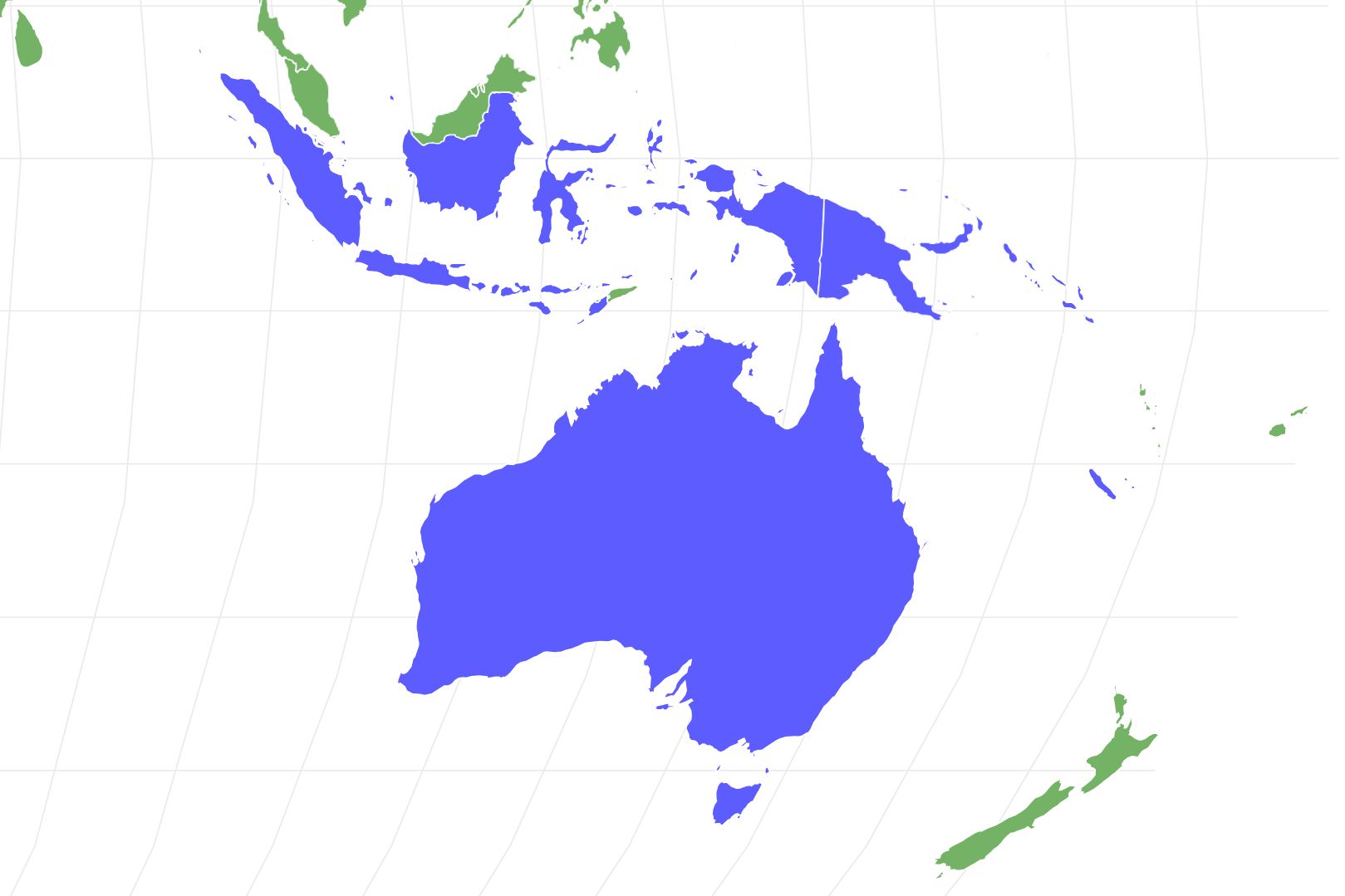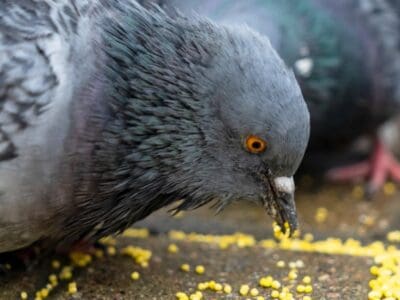Ulysses Butterfly
Papilio ulysses
Ulysses butterflies have come back from endangered status to just "threatened."
Advertisement
Ulysses Butterfly Scientific Classification
- Kingdom
- Animalia
- Phylum
- Arthropoda
- Class
- Insecta
- Order
- Lepidoptera
- Family
- Papilionidae
- Genus
- Papilio
- Scientific Name
- Papilio ulysses
Read our Complete Guide to Classification of Animals.
Ulysses Butterfly Conservation Status
Ulysses Butterfly Facts
- Group Behavior
- Solitary
- Fun Fact
- Ulysses butterflies have come back from endangered status to just "threatened."
- Biggest Threat
- habitat loss
- Most Distinctive Feature
- bright blue wings
- Other Name(s)
- mountain blue butterfly, blue emperor
- Wingspan
- 4.1-5.5 inches
- Habitat
- tropical rainforest
View all of the Ulysses Butterfly images!
Male Ulysses butterflies are attracted to anything blue when they are seeking a mate.
Ulysses Butterfly Summary
The Ulysses butterfly, Papilio ulysses, is a large, beautiful blue butterfly native to Australia, Indonesia, Papua New Guinea, and the Solomon Islands. It lives in the lower levels of rainforests and in suburban gardens. The species was once endangered but has bounced back after Australians started planting more of their favorite pink flowered doughwood trees. Today, this species is a tourism emblem for the government of Queensland, Australia.
Ulysses Butterfly Facts
- This is a large blue butterfly native to Australia, Indonesia, and Papua New Guinea.
- Blue is one of the rarest colors in the animal kingdom.
- The species is named after the hero of Homer’s Odyssey. In the story, Ulysses travels a great deal, so his name was applied to this extremely active butterfly.
- Males seeking mates are attracted to anything blue that they spot.
- Another name for this species is the mountain blue butterfly.
- The Ulysses butterfly is a tourism emblem for the government of Queensland, Australia.
- Adults depend on the pink flowered doughwood tree for their food.
- After facing near extinction, conservation efforts to increase its habitat were successful in reviving the species.
Ulysses Butterfly Scientific name
The scientific name of the species is Papilio ulysses. “Papilio” means “butterfly” in Latin. Furthermore, it is the name of a genus of Papilionidae, which includes swallowtail butterflies. Secondly, “Ulysses” is the name of the hero of Homer’s epic poem Odyssey, who had years of adventures on his journey home from the Trojan Wars. In addition, the species also goes by several common names, including the mountain blue butterfly or the blue emperor. There are 15 subspecies of the Ulysses butterfly.
Ulysses Butterfly Appearance
This amazing butterfly has bright shiny blue wings with black edges and black and brown underneath. Blue is one of the rarest colors in the animal kingdom so that makes this species all the more striking. Females also have small blue marks on the back upside sections of their wings. In addition, their wingspan can range from about 4.1-5.5 inches. At rest, it can close its wings to blend in more with its environment. On the other hand, as it flies, it makes bright flashes of blue that are visible at great distances and help potential mates notice it. Thus, male Ulysses butterflies are attracted to the color blue in flowers, clothing, or other objects. Additionally, they fly quickly to escape predators, making it hard for photographers to capture good images of them in the wild.
Ulysses Butterfly Evolution and History
There are about 20,000 species of butterflies in the world. In fact, the first butterflies in the fossil record date to 40-50 million years ago in the Eocene epoch. Scientists think they originated even earlier than that, maybe as far back as 100 million years. Scientists think they evolved together with their food source: flowering plants. Certainly this accounts for the great variety of butterflies and the fact that they specialize in feeding from specific kinds of plants. Even when a species of butterfly feeds on two or more plants, they are usually closely related plant species. Evidently, geologic events over the course of millions of years led to the dispersal and adaptation of plants and butterflies.
Ulysses Butterfly Behavior
The Ulysses butterfly is extremely active, spending most of its time flying around looking for food and mates and avoiding predators. This is the main reason it was named for a fictional character who traveled a lot. They have an exclusively liquid diet of nectar which they drink through a tube-like tongue called a proboscis. Butterflies are cold-blooded, so they have to use their environment to regulate their body temperature. If they get too cold, they become unable to fly. To warm up, they spread their wings and bask in a sunny spot. If they get overheated, they may seek out a puddle of water to sip to cool off.
Ulysses Butterfly Habitat
The range of the Ulysses butterfly includes northeastern Australia, eastern Indonesia, Papua New Guinea, and the Solomon Islands. It lives in tropical rainforests below the forest canopy and has adapted to life in suburban gardens as well.
Ulysses Butterfly Diet
In its larval stage, this butterfly feeds on Melicope elleryana (the pink-flowered doughwood) or Erythroxylum ellipticum, an Australian shrub known as kerosine wood or turpentine tree. Systematic re-planting of pink-flowered doughwood trees in Australia helped bring the Ulysses butterfly back from the brink of extinction.
Ulysses Butterfly Predators and Threats
The main natural predators of the Ulysses butterfly are birds, frogs, snakes, and flying foxes, all of which exist in great numbers and a variety of species in their tropical rainforest habitat. The biggest threat to the survival of the species, though, is loss of habitat, especially as they are dependent on a specific type of tree for their food source. Fortunately, this beautiful species is one that human beings desire to protect and one that can adapt to suburban life. Thus, it is not a hard sell to get people to plant pink-flowered doughwood trees to attract them. It also points out a problem in conservation: people are more likely to invest time, effort, and money in saving species they find visually attractive. Educational efforts are necessary to help people see the value of species that many people find less appealing but that play vital roles in the ecosystem.
Ulysses Butterfly Reproduction and Life Cycle
Male butterflies look for butterflies of the right color and pattern, fly close, and release pheromones to signal the female. The male will engage in a flight pattern that is a courtship dance and, if the female joins him, will mate with her. The male dies after mating.
The female lays eggs on the leaves of a suitable food source. Afterward, these hatch into larvae that feed on leaves. As caterpillars, Ulysses butterflies are yellow-green with a black mark around their middle and have spikes on their backs. As the caterpillar gets older, they turn white and green, which helps camouflage them. When the caterpillar has finished growing, it stops eating and becomes a pupa. During this stage, the caterpillar forms a chrysalis about 1.5 inches long connected to a plant. When its growth is complete, it emerges as an imago, or full-grown butterfly. Ulysses butterflies live for approximately 8 months.
Ulysses Butterfly Population
Current numbers of the Ulysses butterfly in the wild are unclear, as this is an elusive species native to thick rainforests. After a scare in 2016 in which experts warned the species was on the verge of extinction, Australia embarked on efforts to plant trees to attract them. Fortunately, this effort was successful in improving the butterfly’s conservation status to “threatened.” Australia requires special permits for individuals or organizations to grow or breed them. Without a doubt, for collectors a Ulysses butterfly can be the crown of a butterfly collection. Fortunately, this is not a widespread hobby. It’s best to collect photographs or the remains of already-dead species, of course, as it would be both tragic and illegal to take the life of such a beautiful and endangered species.
Related Animals
- Montrouzier’s Ulysses (Papilio montrouzieri)
- Papilio syfanius
- Alexanor swallowtail or southern swallowtail (Papilio alexanor)
Ulysses Butterfly FAQs (Frequently Asked Questions)
Where do Ulysses butterflies live?
Ulysses butterflies live in the tropical rainforests of northeastern Australia, eastern Indonesia, Papua New Guinea, and the Solomon Islands.
What do Ulysses butterflies eat?
Ulysses butterflies drink nectar from Melicope elleryana (the pink-flowered doughwood).
Why are there so many different colors and patterns of butterflies?
Scientists think butterflies evolved alongside the flowering plants they feed on. This resulted in tens of thousands of different species of both plants and butterflies specialized for each species.
Thank you for reading! Have some feedback for us? Contact the AZ Animals editorial team.
Sources
- Australian Butterfly Sanctuary, Available here: https://australianbutterflies.com/the-ulysses-butterfly/#:~:text=The%20Ulysses%20butterfly%20is%20found,lives%20below%20the%20rainforest%20canopy.
- Our Breathing Planet, Available here: https://www.ourbreathingplanet.com/ulysses-butterfly/
- Wikipedia , Available here: https://en.wikipedia.org/wiki/Papilio_ulysses
- Nature Ecology & Evolution, Available here: https://www.nature.com/articles/s41559-023-02041-9


















